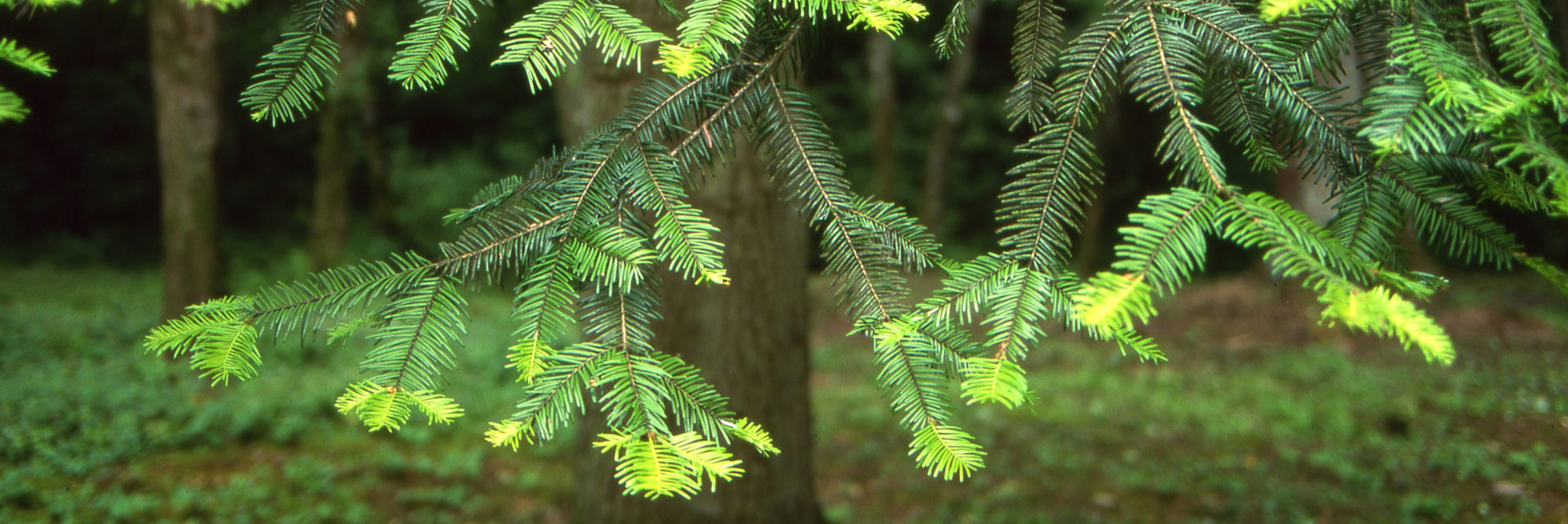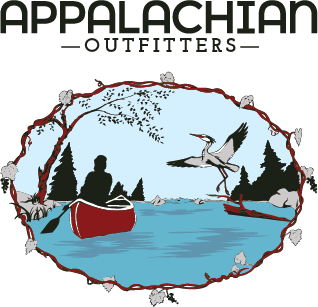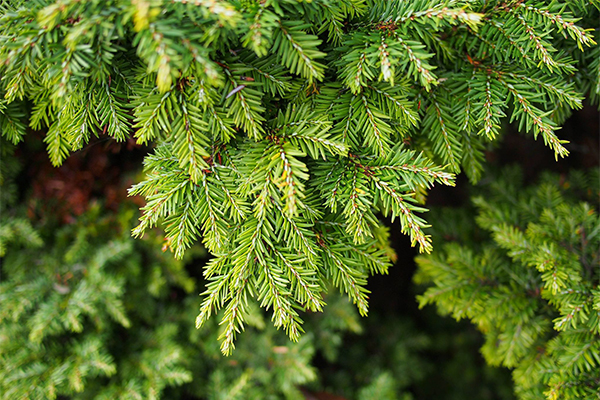
Hemlock trees are incredibly important to the beauty of our North Georgia environment. Back in 2005, the Hemlock Woolly Adelgid (HWA, a tiny, non-native insect) was just starting to kill Hemlocks in Rabun County in Northeast Georgia.
Seeing the devastation the insect was causing in the Carolinas and northward, we knew we had to act fast. A small group of people in Dahlonega started Hemlockfest, with the first festival in October of 2005. The goal was to raise awareness and funds to support research on battling the HWA.
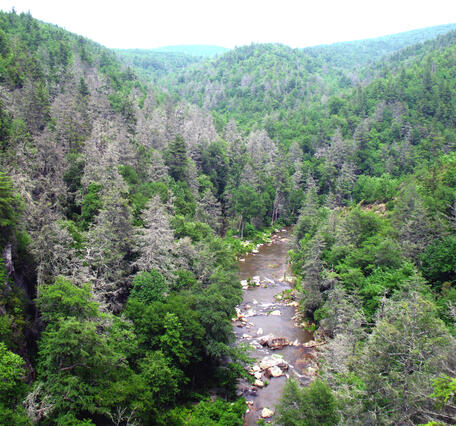
Our original team was long on motivation and energy, but perhaps a bit short on knowledge and experience about running a festival. Over the last 17 years, this amazing group has coalesced and matured – we have now raised and donated over $200K for the Hemlocks and other environmental causes.
So, about those Hemlock trees
Hemlocks are a keystone species that ranges from Maine, down the Appalachian Mountains, into North Georgia. A keystone species is one that plays a major part of the ecosystem. When a keystone species is lost, the entire ecosystem changes, and not for the better. Hemlocks shade the streams and rivers and are hosts to numerous species of birds, mammals, and tons of other organisms. Imagine the effect on trout streams!
Enter the science….
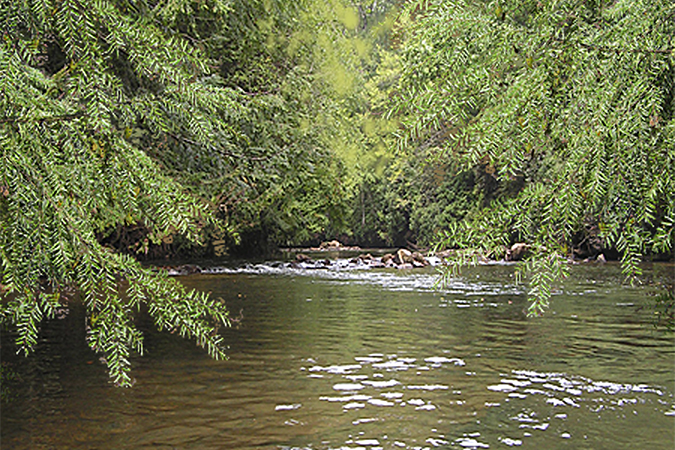
The scientific community is fighting back to save these magnificent wonders. A temporary band-aid is treatment with systemic insecticides. Chemicals work, but after 5-7 years, they wear off.
Many thousands of Hemlocks are alive today because of chemical treatments, but we know that pumping large quantities of insecticide into the forest will have negative side effects on other organisms. Chemicals are not a long-term answer and would never work for the millions of trees in the eastern forests.
Bring us some beetles….
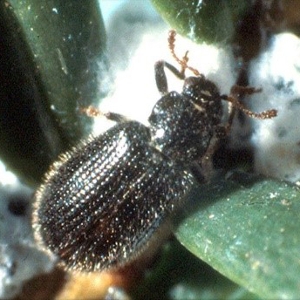
Hemlock trees in Asia are host to Woolly Adelgids, but they also host several species of tiny beetles that prey on HWA. The tree, HWA, and the beetles exist in an equilibrium, and the trees do just fine. Our trees didn’t have either, and they too did just fine … until HWA showed up in Virginia in the 1950s.
HWA kills most trees in 3-5 years and has now spread throughout the Hemlock’s range. What to do? Could we bring the same beetles here? Would that work? Well, yes! This strategy is called biological control. At academic institutions throughout the Hemlock’s range, predator species are being reared and released on Hemlock stands (with government approval, who needs another kudzu…?).
We aren’t finished yet, but in a nutshell, we are now pretty sure that:
– The beetles survive and reproduce on our native Hemlock trees, eating HWA.
– The beetles provide significant protection to the Hemlocks – in short, it works.
– The beetles are spreading through the ecosystem to other trees.
So, how does a music festival fit in with this? Proceeds from Hemlockfest support the research efforts at University of North Georgia, University of Georgia, and Young Harris College. It is no overstatement that, without Hemlockfest, the HWA research efforts in Georgia would be on life support at best. Remember that figure $200,000?
And other stuff….
Hemlockfest is hosted by the Lumpkin Coalition, an environmental non-profit group in the Dahlonega area. In addition to saving the Hemlocks, the festival also supports other efforts – we now maintain a hiking trail in the Chattahoochee National Forest (Logan Turnpike), sponsor an annual river cleanup of the Chestatee and Etowah rivers, and support the American Chestnut Foundation’s efforts to restore the Chestnut to the eastern forest (tree huggers, yes, yes….).
See you at Hemlockfest, November 4-6, 2022!

